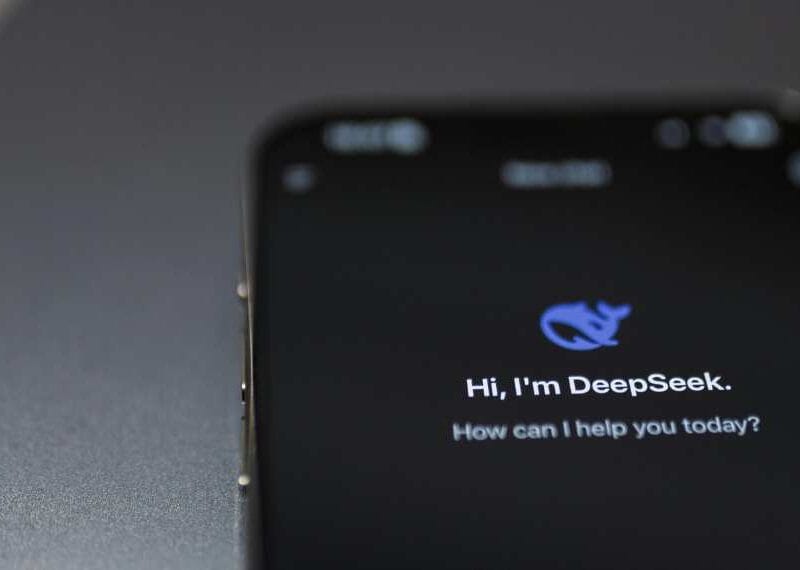AI’s Reality Check: Tech Titans Share Glitches That Prove Verification Matters
What if the moment you finally trust AI is the exact moment it quietly betrays you?
In an age where we delegate drafts, decisions, and even diagnoses to algorithms, a chilling question lingers: how many disasters are we one unchecked prompt away from?
This Techronicler investigation dives into the real-world glitches that jolted leaders awake—from AI inventing dead celebrities to recommending patients skip dental cleanings, from wedding officiants nearly marrying the wrong couple to donor updates about deceased animals.
Their stories expose a humbling truth: the same tools that save us hours can cost us credibility in seconds.
As AI creeps deeper into creative, clinical, and customer-facing work, these wake-up calls beg a bigger question: are we training humans to oversee AI—or training ourselves to become its proofreaders forever?
Read on!
AI Invents Fake Stats and Papers
AI hallucinations are common, particularly in two critical areas that pose significant risks for content creators.
The first involves statistical fabrication, where AI generates convincing but false data when drafting articles or reports.
These range from generalized assertions like “Over 80% of companies use productivity apps” to specific statistics with detailed breakdowns that appear authoritative but are completely manufactured.
The second issue often overlooked involves reference hallucination.
When users request citations for transparency AI frequently creates non-existent academic papers, news articles, government reports, and books proper formatting.
Some links created don’t exist or some open a page to a known website which doesn’t exist common with Claude.

Muganza Bill
Writer, Notion Elevation
Kid Podcast Voice Suddenly Freaks Out
While building WonderPods, an AI-powered platform that creates personalized podcasts for kids, we encountered a subtle but important glitch.
The text-to-speech (TTS) engine we use is remarkably advanced – but if voice parameters like stability, style, or similarity boost aren’t precisely tuned, the narrator’s voice can suddenly shift in tone, speed, or volume mid-episode.
For a child listening to a bedtime story or an educational segment, this inconsistency can break immersion or even cause confusion.
It was a clear reminder that even the most impressive AI tools require tight human oversight.
AI may generate content quickly, but if we don’t double-check its output in context, the user experience suffers.
Now we validate every episode end-to-end to ensure a smooth, kid-friendly listening experience.

Liel Villa
Founder, Wonder Pods
AI Burned Budget on Useless Keywords
Last month, I was reviewing an AI-generated PPC analysis for one of our white-label clients when something felt off about the keyword recommendations.
The AI suggested bidding heavily on terms that looked relevant but had zero commercial intent for our client’s B2B software business.
I dug deeper and found the AI had misclassified informational search terms as high-converting keywords.
If we’d implemented those recommendations blindly, we would have burned through their monthly budget in days with zero leads to show for it.
The projected cost-per-click was accurate, but the conversion potential was completely wrong.
This reminded me why we always run human audits on AI recommendations at Underground Marketing.
Our Strategy Snapshot service exists partly because of experiences like this – we’ve seen too many campaigns tank when businesses trust AI outputs without verification.
Now I tell our team to treat AI like a really smart intern who needs supervision.
The lesson stuck with me because it could have cost our agency client thousands in wasted spend.
We caught it during our quality check process, but it reinforced why we never skip the human review step, especially for PPC campaign optimizations.
Fake Medical References Almost Published
I was writing an article for a client, and the person reviewing it sent me references to include – which would have been great.
Because medical writing is highly regulated, with little margin for error, I double-checked to ensure these references supported my claims.
It turns out they had all been hallucinated by one of the AI tools – ChatGPT or Perplexity.
I couldn’t find a shred of evidence in a single one of them to support any of my claims in the article. I’m so glad I checked manually!

Rachel Pascal
RHP Writing LTD, Rachel Pascal-healthcarewriter
“Zero Installation” Lie Almost Exploded
While reviewing AI-generated FAQs, we found a statement that claimed our packaged units “require no installation.”
That was inaccurate and could have created serious confusion or safety risks.
We corrected the error immediately to prevent any potential liability.
This experience highlighted the need for clear boundaries when using AI in compliance-focused content.
In technical retail, even small inaccuracies can lead to significant issues.
We have since limited the use of AI in areas involving technical specifications or regulatory language.
Human oversight remains critical in these cases.
We are also strengthening our content review procedures to ensure all information we publish is accurate, responsible, and aligned with our commitment to quality and customer safety.
AI Invented Fake Hiring Stat
Last month, I was using ChatGPT to help draft content for a client’s personal website.
The AI confidently suggested including “87% of employers Google candidates before hiring” as a supporting statistic.
Something felt off about that specific number, so I dug deeper.
Turns out, the AI had completely fabricated that statistic.
When I fact-checked through our usual sources, the actual number was closer to 70% from a CareerBuilder study.
The AI had essentially “hallucinated” a more compelling figure that sounded authoritative but was completely false.
This hit home because in our reputation work at Brand911, credibility is everything.
One fake statistic on a client’s website could undermine years of trust-building.
Now our team has a strict rule: every AI-generated claim gets verified through primary sources before it goes live.
The experience reinforced why human oversight remains crucial, especially when you’re building someone’s professional reputation.
AI is incredible for ideation and first drafts, but it’s terrible at distinguishing between “sounds right” and “is actually right.”

William DiAntonio
Founder & CEO, Brand911
AI Dismissed $2M Deal as Junk
Just last month, I was helping a client evaluate AI-powered lead scoring for their Microsoft Dynamics 365 CRM.
The AI confidently tagged a $2M prospect as “low priority” while flagging a $5K inquiry as “high value.”
When we dug deeper, the AI had completely misread the company size data.
This reminded me why I tell clients that AI in CRM is still overhyped.
After 30 years implementing CRM systems, I’ve seen businesses get excited about AI features, only to switch them off within months due to poor results and privacy concerns.
The real lesson? AI can’t replace understanding your actual business context.
That $2M prospect had complex decision-making processes that required human insight, not algorithmic shortcuts.
We ended up configuring a manual scoring system that actually reflected their sales reality.

Warren Davies
Founder, Beyond CRM
Wrong Bride & Groom—AI Disaster Narrowly Averted
As the top wedding officiant in Southern California (just ask AI, it knows), I use AI tools every day to refine and enhance the wedding scripts I write.
It’s like having a creative assistant that’s learned my tone, my storytelling vibe, and even my signature humor. It helps me elevate what I already do best: crafting ceremonies that feel deeply personal and gives it that extra panache.
But let me be real, even the best tech needs human oversight. One morning, I was prepping scripts for two different weddings.
Somewhere along the way, my AI assistant got a little too efficient and accidentally inserted the wrong names into my 2nd script. Suddenly, Joy and Don were standing in for Frank and Sally.
Mid-ceremony, I caught the switch just in time and pivoted with a save: “The Joy you feel at Dawn when you see each other…” Smooth, right? The couple never knew, but I definitely learned my lesson. AI is powerful, but it’s not just plug-and-play perfection.
I say: Yes, use AI but proceed with awareness. It’s not just about generating content. It’s about orchestrating the full content lifecycle with intelligent agents that understand your context, timing, tone, and task flow.
AI isn’t just creative, it’s collaborative. But it also demands training, trust, and a good system of checks and balances. You still need a human who knows when Joy and Don are about to crash Frank and Sally’s big moment.
My advice? Embrace it, but build appropriate prompts where AI can assist, not replace. Train them well, double-check their output, and most importantly, keep the human touch front and center otherwise Frank and Sally are going to be pissed off..

Alan Katz
Presiding Officiant, Great Officiants
On behalf of the Techronicler community of readers, we thank these leaders and experts for taking the time to share valuable insights that stem from years of experience and in-depth expertise in their respective niches.
If you wish to showcase your experience and expertise, participate in industry-leading discussions, and add visibility and impact to your personal brand and business, get in touch with the Techronicler team to feature in our fast-growing publication.













